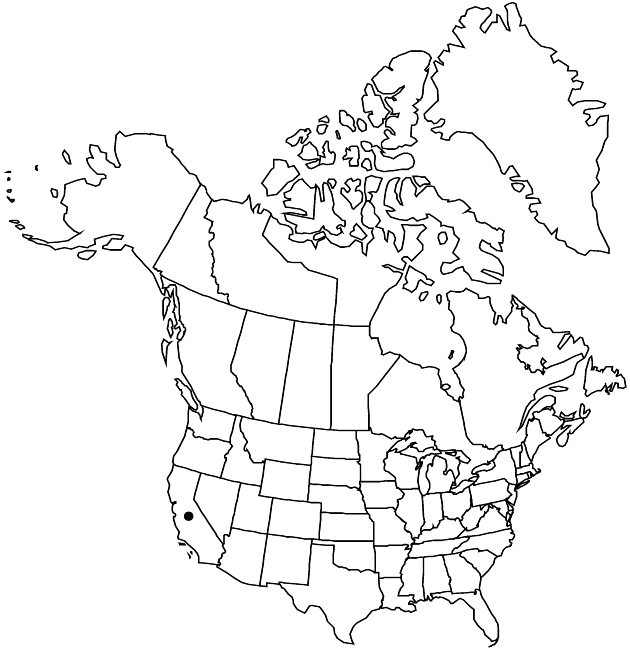Difference between revisions of "Microseris elegans"
in A. Gray et al., Syn. Fl. N. Amer. 1(2): 419. 1884.
FNA>Volume Importer |
FNA>Volume Importer |
||
| Line 27: | Line 27: | ||
|elevation=10–700 m | |elevation=10–700 m | ||
|distribution=Calif.;Mexico (Baja California). | |distribution=Calif.;Mexico (Baja California). | ||
| − | |discussion=<p>Microseris elegans is widespread in interior central California, becoming coastal in the southwestern part of its range. It was hypothesized to be one of the diploid ancestors of M. campestris (K. L. Chambers 1955); molecular evidence supporting that relationship was presented by D. Roelofs et al. (1997).</p> | + | |discussion=<p><i>Microseris elegans</i> is widespread in interior central California, becoming coastal in the southwestern part of its range. It was hypothesized to be one of the diploid ancestors of <i>M. campestris</i> (K. L. Chambers 1955); molecular evidence supporting that relationship was presented by D. Roelofs et al. (1997).</p> |
|tables= | |tables= | ||
|references= | |references= | ||
| Line 51: | Line 51: | ||
|publication year=1884 | |publication year=1884 | ||
|special status= | |special status= | ||
| − | |source xml=https://jpend@bitbucket.org/aafc-mbb/fna-data-curation.git/src/ | + | |source xml=https://jpend@bitbucket.org/aafc-mbb/fna-data-curation.git/src/8f726806613d60c220dc4493de13607dd3150896/coarse_grained_fna_xml/V19-20-21/V19_539.xml |
|tribe=Asteraceae tribe Cichorieae | |tribe=Asteraceae tribe Cichorieae | ||
|genus=Microseris | |genus=Microseris | ||
Revision as of 15:12, 18 September 2019
Annuals, 5–35 cm; taprooted. Stems 0. Leaves basal; petiolate; blades linear to narrowly oblanceolate, 2–20 cm, margins entire, dentate, or pinnately lobed, apices acuminate, faces glabrous or lightly scurfy-puberulent. Peduncles erect or curved-ascending, ebracteate. Involucres globose to ovoid in fruit, 4–8(–10) mm. Phyllaries: apices acute to acuminate, faces glabrous; outer deltate; inner lanceolate (midveins often purple, thickened). Florets 5–100; corollas yellow or orange, equaling or surpassing phyllaries by 1–2 mm. Cypselae columnar to obconic, 1.5–3 mm; pappi of (4–)5 white or brownish, ovate to deltate, aristate scales 0.2–2.5 mm (straight or slightly arcuate, scarcely involute, glabrous, midveins linear, widths less than 1/5 bodies, thicker at base), aristae (brown, fine) barbellulate. 2n = 18.
Phenology: Flowering Apr–Jun.
Habitat: Mostly clay soils, flats and hillsides, often near vernal pools, grasslands, shrublands
Elevation: 10–700 m
Distribution

Calif., Mexico (Baja California).
Discussion
Microseris elegans is widespread in interior central California, becoming coastal in the southwestern part of its range. It was hypothesized to be one of the diploid ancestors of M. campestris (K. L. Chambers 1955); molecular evidence supporting that relationship was presented by D. Roelofs et al. (1997).
Selected References
None.